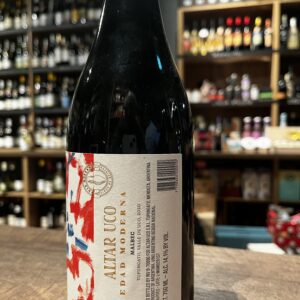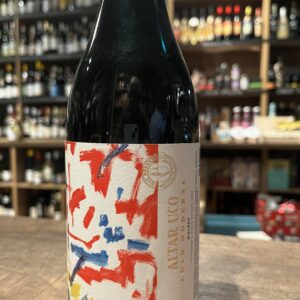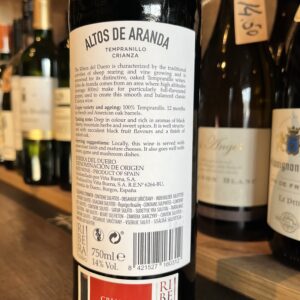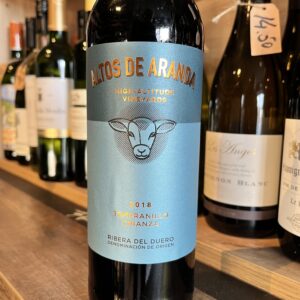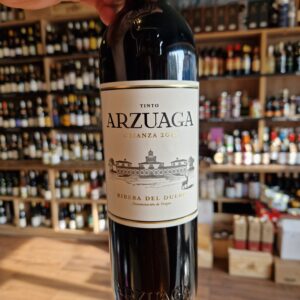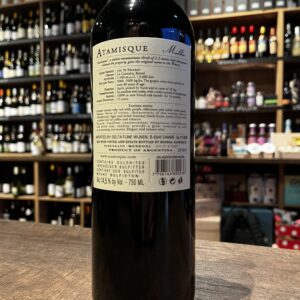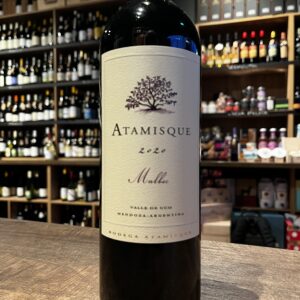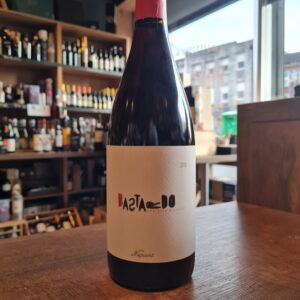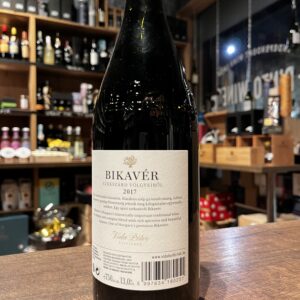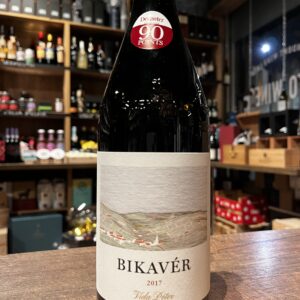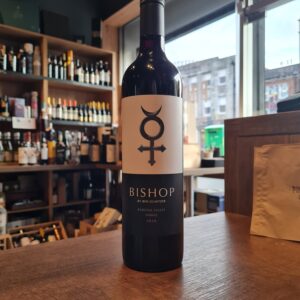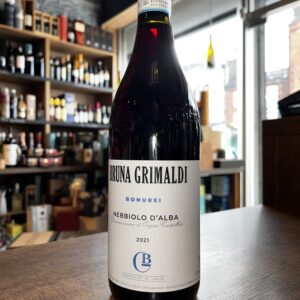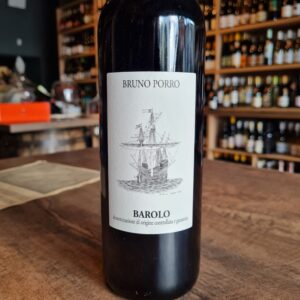-
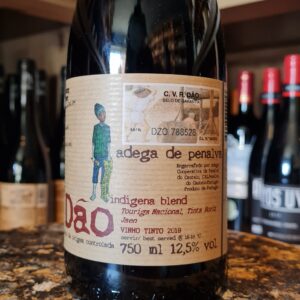 Adega de Penalva wines are delicious everyday examples of one of Portugal’s most intriguing appellations — the Dão. Perched above the Dão river itself as it snakes through its granite valleys, the Adega de Penalva is one of the leading cooperatives in the area, boasting around a thousand member growers. It’s important to note, though, that the average holding per member amounts to barely over a hectare—a figure that reminds us how tenaciously much of rural Portugal clings to its old ways. (On that note, all fruit destined for the ‘Indigena’ bottlings is hand-harvested.) Since its founding in the 1960s, the Adega has been collecting its members’ grapes and producing clean, characterful wines with a minimum of fuss that showcase real regional typicity while remaining extremely attractively priced. Adega de Penalva Indigena Dao Tinto is made with 40% Touriga Nacional, 30% Tinta Roriz (Tempranillo), and 30% Jaen (Mencía). Hand-harvested, fully destemmed and aged in a combination of stainless steel and concrete tank. Aromas of leather and blueberries lead to a palate full of dark fruits with cherry and raspberry notes. Pairs well with beef and lamb.
Adega de Penalva wines are delicious everyday examples of one of Portugal’s most intriguing appellations — the Dão. Perched above the Dão river itself as it snakes through its granite valleys, the Adega de Penalva is one of the leading cooperatives in the area, boasting around a thousand member growers. It’s important to note, though, that the average holding per member amounts to barely over a hectare—a figure that reminds us how tenaciously much of rural Portugal clings to its old ways. (On that note, all fruit destined for the ‘Indigena’ bottlings is hand-harvested.) Since its founding in the 1960s, the Adega has been collecting its members’ grapes and producing clean, characterful wines with a minimum of fuss that showcase real regional typicity while remaining extremely attractively priced. Adega de Penalva Indigena Dao Tinto is made with 40% Touriga Nacional, 30% Tinta Roriz (Tempranillo), and 30% Jaen (Mencía). Hand-harvested, fully destemmed and aged in a combination of stainless steel and concrete tank. Aromas of leather and blueberries lead to a palate full of dark fruits with cherry and raspberry notes. Pairs well with beef and lamb. -
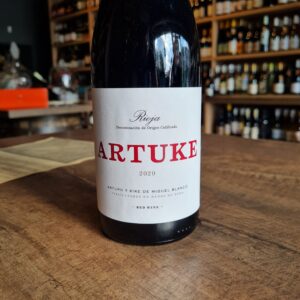 Made in a Beaujolais style, with the carbonic maceration method. This juicy ''Joven'' fresh fruited style of Rioja has zero oak influence as it ages in concrete tanks for 6 months. Farmed without any synthetic fertilizers or pesticides. Arturo Blanco was once asked what the philosophy at Bodegas Artuke was and he simply replied 'we are farmers'. The approach here is 100% focused on interpreting the family's 32 plots which are split between the villages of Baños de Ebro and Ábalos in Rioja Alavesa. Biodynamic techniques are employed in the vineyards and Arturo and Kike are also busy recovering old, ignored plots of ancient vines. Vinification is aimed at expressing the characteristics of the vineyard and quality of fruit above all else. The restrained use of oak and inclination towards different types/sizes of barrel, plus an unwillingness to adhere to the subscribed regimes for classification means that Artuke are precluded from using Crianza, Reserva and Gran Reserva designations on their wines. This mouth-watering red wine takes a relatively deep chill which makes it a versatile pairing with all types of food: tuna, pretty much anything made with zucchini, fried chicken, gooey cheese sandwiches, pizza, etc…
Made in a Beaujolais style, with the carbonic maceration method. This juicy ''Joven'' fresh fruited style of Rioja has zero oak influence as it ages in concrete tanks for 6 months. Farmed without any synthetic fertilizers or pesticides. Arturo Blanco was once asked what the philosophy at Bodegas Artuke was and he simply replied 'we are farmers'. The approach here is 100% focused on interpreting the family's 32 plots which are split between the villages of Baños de Ebro and Ábalos in Rioja Alavesa. Biodynamic techniques are employed in the vineyards and Arturo and Kike are also busy recovering old, ignored plots of ancient vines. Vinification is aimed at expressing the characteristics of the vineyard and quality of fruit above all else. The restrained use of oak and inclination towards different types/sizes of barrel, plus an unwillingness to adhere to the subscribed regimes for classification means that Artuke are precluded from using Crianza, Reserva and Gran Reserva designations on their wines. This mouth-watering red wine takes a relatively deep chill which makes it a versatile pairing with all types of food: tuna, pretty much anything made with zucchini, fried chicken, gooey cheese sandwiches, pizza, etc… -
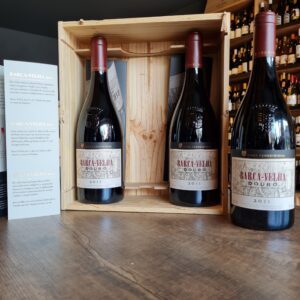 Casa Ferreirinha, was acquired by Sogrape Vinhos in 1987, its wines are synonymous with time and art. This has happened since its foundation, in the 18th century, by the hand of Bernardo Ferreira, who saw the formula refined by his descendants, especially by his granddaughter Dona Antónia Adelaide Ferreira, who affectionately became known as "Ferreirinha" or "Ferreirinha-da-Régua" for the people of that land. Through the hands of Dona Antónia, who twice widowed herself at the head of a large company, Ferreira consolidated itself admirably. Her entrepreneurial spirit taught her to foresee, decide, create, teach and love, making her a figure of great projection and charisma. Barca Velha is the result of the passion of Fernando Nicolau de Almeida (Casa Ferreirinha Head Winemaker in 1952), who envisioned a high quality Douro Red Wines made with the aging potential of Vintage Ports. The first harvest was 1952. Barca Velha is only released in exceptional years, current head winemaker Luis Sottomayor began his career at this house as an apprentice learning directly from Fernando Nicolau D'Almeida. ''2011 was an extraordinary year-one of the best ever in Douro-Intense and exceptional quality. When this wine was born, we soon realized that it would be destined for Barca-Velha”. But even so, it was necessary to pass the great test of time with distinction. In the barrels, first, and then in the bottle, it was followed and evaluated over nine years, until the final decision was made.
Casa Ferreirinha, was acquired by Sogrape Vinhos in 1987, its wines are synonymous with time and art. This has happened since its foundation, in the 18th century, by the hand of Bernardo Ferreira, who saw the formula refined by his descendants, especially by his granddaughter Dona Antónia Adelaide Ferreira, who affectionately became known as "Ferreirinha" or "Ferreirinha-da-Régua" for the people of that land. Through the hands of Dona Antónia, who twice widowed herself at the head of a large company, Ferreira consolidated itself admirably. Her entrepreneurial spirit taught her to foresee, decide, create, teach and love, making her a figure of great projection and charisma. Barca Velha is the result of the passion of Fernando Nicolau de Almeida (Casa Ferreirinha Head Winemaker in 1952), who envisioned a high quality Douro Red Wines made with the aging potential of Vintage Ports. The first harvest was 1952. Barca Velha is only released in exceptional years, current head winemaker Luis Sottomayor began his career at this house as an apprentice learning directly from Fernando Nicolau D'Almeida. ''2011 was an extraordinary year-one of the best ever in Douro-Intense and exceptional quality. When this wine was born, we soon realized that it would be destined for Barca-Velha”. But even so, it was necessary to pass the great test of time with distinction. In the barrels, first, and then in the bottle, it was followed and evaluated over nine years, until the final decision was made. -
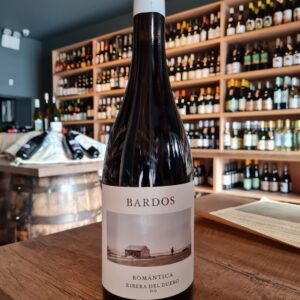 Bardos Romantica is a red wine from Ribera del Duero, produced by Bodegas Bardos, belonging to the Vintae Group, which are known to produce wines in twelve different Spanish regions, such as the Hacienda López from Haro. Made from 100% Tinta del País (Tempranillo). The grapes come from a rigorous selection of low yielding old vines located in the highlands of the central plateau in Onesimus Quintanilla (Valladolid). The grapes, once collected, are transported to the winery in boxes of 15 kilos and small trailers. Here a selection of bunches is made on tables. Subsequent fermentation and maceration is carried out in vats at a temperature of 28ªC for 3 or 4 weeks. Once fermented and macerated, Bardos Romantica undergoes a malolactic fermentation in French oak barrels, with a weekly beating and strict control of each barrel. Finally, Bardos Romantica is aged for 14 months in barrels of one and two years in French oak, located in underground cellars where the temperature is maintained throughout the year at around 14ºC. Bardos Romantica is a soft and original wine. After all the technicalities all I can say is a great wine, enjoy it, share it!
Bardos Romantica is a red wine from Ribera del Duero, produced by Bodegas Bardos, belonging to the Vintae Group, which are known to produce wines in twelve different Spanish regions, such as the Hacienda López from Haro. Made from 100% Tinta del País (Tempranillo). The grapes come from a rigorous selection of low yielding old vines located in the highlands of the central plateau in Onesimus Quintanilla (Valladolid). The grapes, once collected, are transported to the winery in boxes of 15 kilos and small trailers. Here a selection of bunches is made on tables. Subsequent fermentation and maceration is carried out in vats at a temperature of 28ªC for 3 or 4 weeks. Once fermented and macerated, Bardos Romantica undergoes a malolactic fermentation in French oak barrels, with a weekly beating and strict control of each barrel. Finally, Bardos Romantica is aged for 14 months in barrels of one and two years in French oak, located in underground cellars where the temperature is maintained throughout the year at around 14ºC. Bardos Romantica is a soft and original wine. After all the technicalities all I can say is a great wine, enjoy it, share it! -
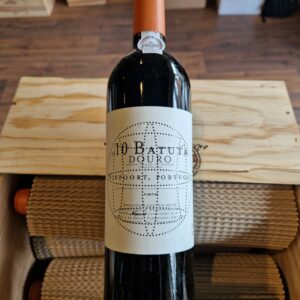 Niepoort is a family business dating back to 1842. Its winemaking tradition began in the Douro region, with the roduction of Port wine. Nowadays has a foothold in all the major Portuguese regions with still wines production outside the Douro Valley. Know-how, enthusiasm and an innovative mindset have passed down from generation to generation, making Niepoort one of the most authentic and notable Portuguese wine producers. The grapes to produce this wine come from Quinta do Carril, from a north-facing vineyard with more than 70 years, and also from old vineyards about 100 years old near Quinta de Nápoles. Niepoort sums up this elegant bottling well by saying “Batuta is a wine of extremes, having more of everything, is at the same time, the one with a more discrete behavior.” Quite so this year (and most), as the wine opens with subtlety and elegance, seeming rather mute. It is somewhat tinged by oak early in its life. That will be easily absorbed. It takes some air and patience to see what this sometimes too subtle wine has, but there is good structure underneath (and a little tannic pop that emerges with air) that should allow the wine to develop well and have the time to acquire some complexity, which is often its best feature. It has a very Burgundian feel, with a silky, graceful mid-palate. There is nothing obvious about this bottling in any year. This year, certainly, it is a Batuta that is perhaps subtle to a fault, but it will be a perfect food wine and when you are drinking it you will suddenly realize how much you like it.'' Time will tell, definitely one of the great current masters of winemaking. Not just in Portugal but in the world
Niepoort is a family business dating back to 1842. Its winemaking tradition began in the Douro region, with the roduction of Port wine. Nowadays has a foothold in all the major Portuguese regions with still wines production outside the Douro Valley. Know-how, enthusiasm and an innovative mindset have passed down from generation to generation, making Niepoort one of the most authentic and notable Portuguese wine producers. The grapes to produce this wine come from Quinta do Carril, from a north-facing vineyard with more than 70 years, and also from old vineyards about 100 years old near Quinta de Nápoles. Niepoort sums up this elegant bottling well by saying “Batuta is a wine of extremes, having more of everything, is at the same time, the one with a more discrete behavior.” Quite so this year (and most), as the wine opens with subtlety and elegance, seeming rather mute. It is somewhat tinged by oak early in its life. That will be easily absorbed. It takes some air and patience to see what this sometimes too subtle wine has, but there is good structure underneath (and a little tannic pop that emerges with air) that should allow the wine to develop well and have the time to acquire some complexity, which is often its best feature. It has a very Burgundian feel, with a silky, graceful mid-palate. There is nothing obvious about this bottling in any year. This year, certainly, it is a Batuta that is perhaps subtle to a fault, but it will be a perfect food wine and when you are drinking it you will suddenly realize how much you like it.'' Time will tell, definitely one of the great current masters of winemaking. Not just in Portugal but in the world -
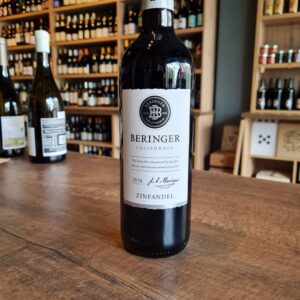 A quintessential California Zinfandel. Beringer has built a legacy crafting renowned wines from a prized collection of California vineyards, celebrating a remarkable winemaking tradition dating back to 1876 when the Napa winery was founded by Beringer brothers Frederick & Jacob. A Zin that definitely portrays some Classic California ripeness. Ripe blueberries, blackberries, plums, a hint of smoky and mineral characters and a touch perfumed (dried floral notes) on the nose. On the palate you’ll find that smoke and berry ripeness coming through, with a little tangy raspberry adding to a lengthy finish. Medium plus body with a silky mouthfeel, smooth light tannins and luscious acidity. I love Zins with a juicy bacon and smoked cheddar burger or with your favourite pizza. This one should not disappoint!
A quintessential California Zinfandel. Beringer has built a legacy crafting renowned wines from a prized collection of California vineyards, celebrating a remarkable winemaking tradition dating back to 1876 when the Napa winery was founded by Beringer brothers Frederick & Jacob. A Zin that definitely portrays some Classic California ripeness. Ripe blueberries, blackberries, plums, a hint of smoky and mineral characters and a touch perfumed (dried floral notes) on the nose. On the palate you’ll find that smoke and berry ripeness coming through, with a little tangy raspberry adding to a lengthy finish. Medium plus body with a silky mouthfeel, smooth light tannins and luscious acidity. I love Zins with a juicy bacon and smoked cheddar burger or with your favourite pizza. This one should not disappoint! -
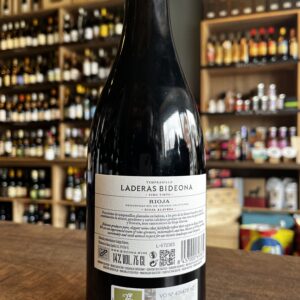
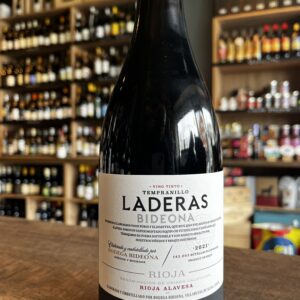 Badiola is a winery in the heart of Rioja Alavesa. Founded in 2018 by acquiring an existing winery, Badiola offers village and single vieyard wines that display the freshness, elegance and depth of flavours which distinguish the great wines from this part of Rioja. Badiola cultivates over 300 parcels of extraordinary vineyards on the slopes of the Sierra Cantabria, mainly in the villages of villabuena de Alava, Leza, Samaniego, Laguardia, Navaridas and Banos de Ebro. Averag age of the vines are 50 years old which means that fruit is of outstanding quality and well the vine is well inserted into the soil and not as prone to climatic issues that may arise. This wine is made from high quality, low yelding grapes from hillside(Laderas) vines on limestones soils, without the need for carbonic maceration to mask unripe or unhealthy fruit. About a quarter of the wine is aged from 4 to 6 months in new barriques of top quality French and American Oak, for added complexity and texture, but not overt oak character. A versatile and very satisfying drinking wine and a great example of cooler climate Tempranillo from Rioja Alavesa. A good match with both meat and fish-based tapas, mezze, rice dishes and pasta.
Badiola is a winery in the heart of Rioja Alavesa. Founded in 2018 by acquiring an existing winery, Badiola offers village and single vieyard wines that display the freshness, elegance and depth of flavours which distinguish the great wines from this part of Rioja. Badiola cultivates over 300 parcels of extraordinary vineyards on the slopes of the Sierra Cantabria, mainly in the villages of villabuena de Alava, Leza, Samaniego, Laguardia, Navaridas and Banos de Ebro. Averag age of the vines are 50 years old which means that fruit is of outstanding quality and well the vine is well inserted into the soil and not as prone to climatic issues that may arise. This wine is made from high quality, low yelding grapes from hillside(Laderas) vines on limestones soils, without the need for carbonic maceration to mask unripe or unhealthy fruit. About a quarter of the wine is aged from 4 to 6 months in new barriques of top quality French and American Oak, for added complexity and texture, but not overt oak character. A versatile and very satisfying drinking wine and a great example of cooler climate Tempranillo from Rioja Alavesa. A good match with both meat and fish-based tapas, mezze, rice dishes and pasta. -
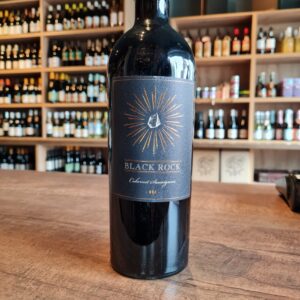 Black Rock is part of the Bronco Wine Company, which was formed in 1973 by Fred, Joseph and John Franzia. Since the start, they have been clear that the goal is to make wines for consumption, rather than for storage. At the same time, the quality must be as high as possible, at the lowest possible price. The name Bronco is a merger of brother and cousin after the brothers Fred and Joseph and their cousin John. Great aromas of red berries and fruit, with a touch of herbaceousness. Full-bodied, with healthy fruit tones, well-balanced tannins and a subtle hint of oak. Serve around 16-18 ° C as a perfect complement to grilled lamb chops, or to dishes on game or beef. Also nice for a cheese platter, with not too strong cheeses.
Black Rock is part of the Bronco Wine Company, which was formed in 1973 by Fred, Joseph and John Franzia. Since the start, they have been clear that the goal is to make wines for consumption, rather than for storage. At the same time, the quality must be as high as possible, at the lowest possible price. The name Bronco is a merger of brother and cousin after the brothers Fred and Joseph and their cousin John. Great aromas of red berries and fruit, with a touch of herbaceousness. Full-bodied, with healthy fruit tones, well-balanced tannins and a subtle hint of oak. Serve around 16-18 ° C as a perfect complement to grilled lamb chops, or to dishes on game or beef. Also nice for a cheese platter, with not too strong cheeses. -
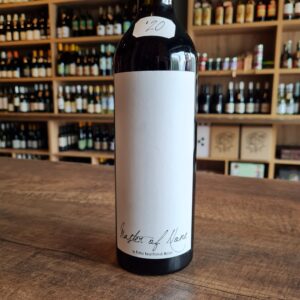 Master of none - Playing with words referring to themselves not being an expert in any one varietal or wine style hence the saying: “Jack of all trades, master of none”. Clever and humble, nonetheless, their wines are at the forefront not only of South Africa but in the world with the amazing wines they are producing. If you enjoy reds on the lighter end of the spectrum such as Pinot Noir or Gamay then Pieter's 'Master of None' will definitely be up your street! It comprises a blend of 5 different grape varieties from tiny vineyard plots across 6 distinct regions; 40% Grenache from Wellington, 30% Cinsault from sites in Darling and Stellenbosch, 8% Pinot Noir from Elgin and a further 8% Syrah from Swartland. Unusually, Pieter then tops up the blend with Voor Paardeberg Chenin Blanc, adding aromatic freshness to the finished wine. It drinks like a top-class Beaujolais – super bright and juicy, bursting with wild strawberry, cherry and with an earthy, smoky undercurrent. Enjoy at room temperature or slightly chilled – perfect for summer drinking! “In 2004, a lady came to my house to buy wine. She asked for anything but Shiraz. “I don’t drink Shiraz”, were her exact words. I poured her a glass of wine. She loved it and bought 3 cases. It was a straight Shiraz. It’s a fact – we do judge the book by its cover.”
Master of none - Playing with words referring to themselves not being an expert in any one varietal or wine style hence the saying: “Jack of all trades, master of none”. Clever and humble, nonetheless, their wines are at the forefront not only of South Africa but in the world with the amazing wines they are producing. If you enjoy reds on the lighter end of the spectrum such as Pinot Noir or Gamay then Pieter's 'Master of None' will definitely be up your street! It comprises a blend of 5 different grape varieties from tiny vineyard plots across 6 distinct regions; 40% Grenache from Wellington, 30% Cinsault from sites in Darling and Stellenbosch, 8% Pinot Noir from Elgin and a further 8% Syrah from Swartland. Unusually, Pieter then tops up the blend with Voor Paardeberg Chenin Blanc, adding aromatic freshness to the finished wine. It drinks like a top-class Beaujolais – super bright and juicy, bursting with wild strawberry, cherry and with an earthy, smoky undercurrent. Enjoy at room temperature or slightly chilled – perfect for summer drinking! “In 2004, a lady came to my house to buy wine. She asked for anything but Shiraz. “I don’t drink Shiraz”, were her exact words. I poured her a glass of wine. She loved it and bought 3 cases. It was a straight Shiraz. It’s a fact – we do judge the book by its cover.” -
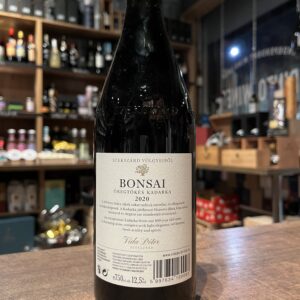
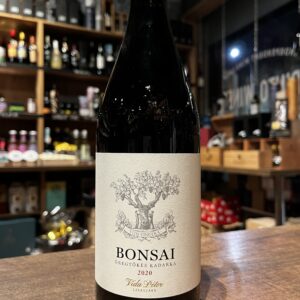 An exceptional Kadarka from the Vida winery's 100 year old vines. The history of the name for this wine is also peculiar. One day, Peter Sr. was presenting his winery to one of his Japanese partners. When they were about to approach the vineyards, the gentleman noticed this little vine and jumped off the car and started shouting “BONSAI!” pointing at them. The tiny appearance of these stocks resembles a Bonsai, which in Japanese culture represents wisdom, a wish for long life and is also a symbol of good luck. A small curiosity is that Kadarka is a grape that was widely available before the Soviet union and well praised. With the Iron Curtain nearly fell into extinction, it's delicious but takes a huge effort to grow and is best from old vines. Reminds you of any other grape with certain similarities?
An exceptional Kadarka from the Vida winery's 100 year old vines. The history of the name for this wine is also peculiar. One day, Peter Sr. was presenting his winery to one of his Japanese partners. When they were about to approach the vineyards, the gentleman noticed this little vine and jumped off the car and started shouting “BONSAI!” pointing at them. The tiny appearance of these stocks resembles a Bonsai, which in Japanese culture represents wisdom, a wish for long life and is also a symbol of good luck. A small curiosity is that Kadarka is a grape that was widely available before the Soviet union and well praised. With the Iron Curtain nearly fell into extinction, it's delicious but takes a huge effort to grow and is best from old vines. Reminds you of any other grape with certain similarities? -
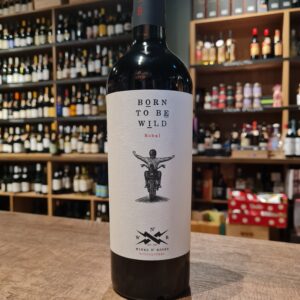 Mars Bonfire, Steppenwolf’s drummer’s brother, saw a poster which said,” Born To Ride” with a photo of a motorbike taking off from the ground surrounded by fire. Around that time, he had bought his first car and that’s how the idea came about to celebrate the freedom of being able to go where you want and when you want. NASA used “Born To Be Wild” to wake up their astronaut crews. And when a spaceship landed for the first time on Mars the small exploratory vehicle went down the ramp to the rhythm of “Get your motor running”. In 2004 Paris Hilton asked permission to use the song in her reality show The Simple Life. The band refused.” There are things Rock’n’Roll can’t accept.” The organic Bobal grapes are grown in poor clay soils situated in the west of the province of Valencia at 700 metres altitude. The vines grow in a ‘continental’ climate influenced by the Mediterranean. The wine spends 9 months in French and American oak barrels. Best enjoyed relaxing and/or with pasta, rice and red meat dishes. The Bobal grape variety has really high levels of resveratrol, an antioxidant and a heart healthy polyphenol, which helps metabolise fats.
Mars Bonfire, Steppenwolf’s drummer’s brother, saw a poster which said,” Born To Ride” with a photo of a motorbike taking off from the ground surrounded by fire. Around that time, he had bought his first car and that’s how the idea came about to celebrate the freedom of being able to go where you want and when you want. NASA used “Born To Be Wild” to wake up their astronaut crews. And when a spaceship landed for the first time on Mars the small exploratory vehicle went down the ramp to the rhythm of “Get your motor running”. In 2004 Paris Hilton asked permission to use the song in her reality show The Simple Life. The band refused.” There are things Rock’n’Roll can’t accept.” The organic Bobal grapes are grown in poor clay soils situated in the west of the province of Valencia at 700 metres altitude. The vines grow in a ‘continental’ climate influenced by the Mediterranean. The wine spends 9 months in French and American oak barrels. Best enjoyed relaxing and/or with pasta, rice and red meat dishes. The Bobal grape variety has really high levels of resveratrol, an antioxidant and a heart healthy polyphenol, which helps metabolise fats. -
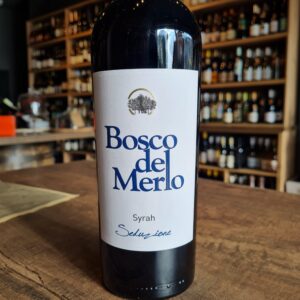 The Syrah is an international grape variety famous for its spicy notes that Bosco del Merlo interprets with great elegance. The grapes are harvest at optimally maturity during the last days of September. This Syrah ''Seduzione'' is large and round wine with great character. Enveloping and very pleasant for its harmony and wideness. Ideal for all meals, excellent with dishes of boiled and baked meats. Perfect with cold cuts and cheeses of medium maturing and insuperable alone, after dinner or in company.
The Syrah is an international grape variety famous for its spicy notes that Bosco del Merlo interprets with great elegance. The grapes are harvest at optimally maturity during the last days of September. This Syrah ''Seduzione'' is large and round wine with great character. Enveloping and very pleasant for its harmony and wideness. Ideal for all meals, excellent with dishes of boiled and baked meats. Perfect with cold cuts and cheeses of medium maturing and insuperable alone, after dinner or in company. -
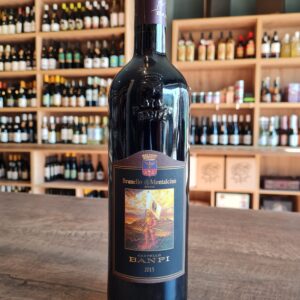 A classic from Castello Banfi in Montalcino.Elegant and balanced Brunello, characterized by a sweet, rich and complex aroma of fruit jam. A wine with great structure that is well balanced by a good softness and acidity on the final. Extremely persistent with excellent aging potential. Game, red meats or aged cheese. Or just on it's own with good company!
A classic from Castello Banfi in Montalcino.Elegant and balanced Brunello, characterized by a sweet, rich and complex aroma of fruit jam. A wine with great structure that is well balanced by a good softness and acidity on the final. Extremely persistent with excellent aging potential. Game, red meats or aged cheese. Or just on it's own with good company! -
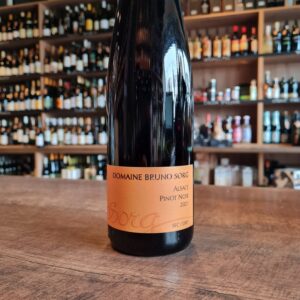 The late Bruno Sorg and his son François are responsible for some of the finest, richest and most concentrated wines in Alsace. The Sorg family have been producing wine in the Alsace since the 18th century, with this particular branch of it established in the late 1960s by Renée and the late Bruno Sorg. Alsace is becoming better known for and offering superb value in comparison to some Pinot from Burgundy. A complex Pinot, that has good fruit density, freshness along with a savoury dimension. Fantastic value!
The late Bruno Sorg and his son François are responsible for some of the finest, richest and most concentrated wines in Alsace. The Sorg family have been producing wine in the Alsace since the 18th century, with this particular branch of it established in the late 1960s by Renée and the late Bruno Sorg. Alsace is becoming better known for and offering superb value in comparison to some Pinot from Burgundy. A complex Pinot, that has good fruit density, freshness along with a savoury dimension. Fantastic value! -
Out of stock
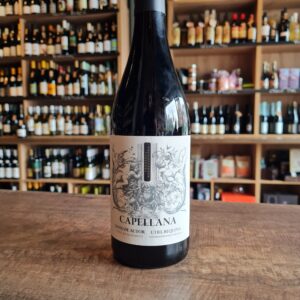 This complex and medium to full-bodied wine is made from Cabernet Sauvignon and Tempranillo grapes. It matured for 7 months in American oak barrels to its full taste. The Cabernet brings strength and abundance here, Tempranillo provides fruit and structure. The result is a wine with character and personality. Cherry juice-colored to brick-red in the glass. Overwhelming scent of cherries, plums and wild berries; the same fruits pickled in rum, all nobly underlaid with fine toasted notes from the wooden barrel. The oak wood is noticeable, but does not dominate the wine. In the mouth the wine is well structured, full and with little surprising tannins. Ideal to accompany grilled meats and different types of stews.
This complex and medium to full-bodied wine is made from Cabernet Sauvignon and Tempranillo grapes. It matured for 7 months in American oak barrels to its full taste. The Cabernet brings strength and abundance here, Tempranillo provides fruit and structure. The result is a wine with character and personality. Cherry juice-colored to brick-red in the glass. Overwhelming scent of cherries, plums and wild berries; the same fruits pickled in rum, all nobly underlaid with fine toasted notes from the wooden barrel. The oak wood is noticeable, but does not dominate the wine. In the mouth the wine is well structured, full and with little surprising tannins. Ideal to accompany grilled meats and different types of stews.


